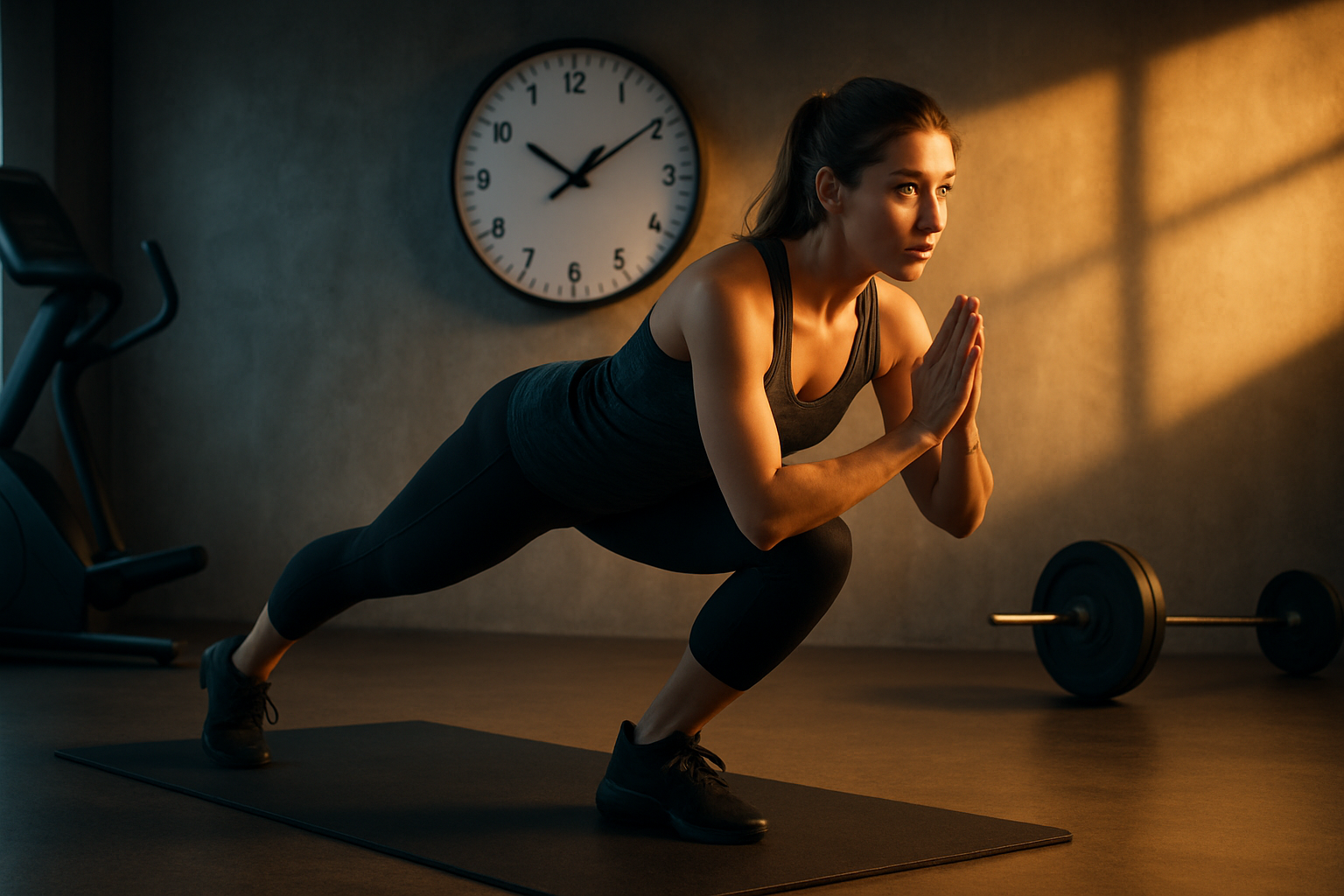Chrono-Exercise: Optimizing Workouts Through Circadian Rhythms
Imagine a world where your workout's effectiveness isn't just determined by what you do, but when you do it. Could the timing of your exercise routine be the key to unlocking peak performance and health benefits? Welcome to the fascinating realm of chrono-exercise, where science meets sweat in perfect harmony.

The Science Behind Chrono-Exercise
Chrono-exercise is rooted in the field of chronobiology, which studies the natural internal processes that regulate our body’s functions over a 24-hour cycle. These circadian rhythms influence everything from hormone production to body temperature, and importantly, our physical performance capabilities.
Research has shown that our bodies respond differently to exercise at various times of the day. For instance, muscle strength and flexibility tend to peak in the late afternoon, while cardiovascular efficiency is often at its best in the morning. By understanding and leveraging these patterns, individuals can potentially enhance their workout results and minimize injury risks.
Mapping Your Biological Clock
To fully harness the power of chrono-exercise, it’s crucial to understand your personal circadian rhythm. While general patterns exist, individual variations can significantly impact the optimal timing for different types of exercise.
Factors such as sleep-wake cycles, meal timing, and even genetic predispositions play roles in determining your unique biological clock. Keeping a detailed log of your energy levels, mood, and performance throughout the day can provide valuable insights into your personal rhythm.
Some individuals may find they’re ‘larks,’ performing best in the morning, while others are ‘night owls,’ hitting their stride later in the day. Recognizing your chronotype can help you tailor your exercise schedule for maximum benefit.
Optimizing Workouts Through Timing
Once you’ve identified your circadian patterns, you can begin to strategically time your workouts. Here’s how different types of exercise may benefit from specific timing:
Strength Training: Research suggests that muscle strength and testosterone levels peak in the late afternoon to early evening. This makes it an ideal time for weightlifting and resistance exercises, potentially leading to greater muscle gains and improved performance.
Cardiovascular Exercise: Morning cardio sessions may be more effective for fat burning and weight loss. The body’s cortisol levels are naturally higher in the morning, which can help mobilize fat stores for energy during exercise.
Flexibility and Yoga: Body temperature and joint flexibility tend to increase throughout the day, peaking in the late afternoon. This makes evening sessions potentially more beneficial for activities requiring extensive range of motion, such as yoga or stretching routines.
High-Intensity Interval Training (HIIT): The body’s ability to handle high-intensity exercise improves as the day progresses. Afternoon or early evening HIIT sessions may allow for greater power output and endurance.
Chrono-Exercise and Recovery
The timing of exercise doesn’t just affect performance; it also plays a crucial role in recovery. Night-time exercise, while sometimes unavoidable, can disrupt sleep patterns by elevating body temperature and heart rate. This can potentially impair the body’s natural recovery processes.
Conversely, morning exercise has been shown to improve sleep quality by regulating the sleep-wake cycle. It can also enhance mood and cognitive function throughout the day, providing a holistic approach to wellness.
Recovery nutrition timing is another aspect to consider. Post-workout protein synthesis and glycogen replenishment can be optimized by aligning nutrient intake with your exercise schedule and circadian rhythms.
Practical Implementation of Chrono-Exercise
Implementing chrono-exercise principles doesn’t require a complete overhaul of your routine. Start by making small adjustments and observing how your body responds. Here are some strategies to consider:
-
Experiment with different workout times and track your performance and energy levels.
-
Gradually shift your exercise schedule to align with your identified optimal times.
-
Be consistent with your new routine to allow your body to adapt to the changes.
-
Consider your daily commitments and find a sustainable balance between ideal timing and practicality.
-
Adjust your sleep and meal schedules to support your new exercise timing.
Chrono-Exercise Insights
-
Morning exercise can increase metabolism for up to 14 hours post-workout.
-
Afternoon strength training may result in up to 5% higher power output compared to morning sessions.
-
Evening exercise can improve protein synthesis rates by up to 50% compared to morning workouts.
-
Aligning exercise with circadian rhythms may reduce injury risk by up to 20%.
-
Consistent exercise timing can help regulate sleep patterns and improve overall sleep quality.
As we continue to unravel the intricate relationship between our internal clocks and physical performance, chrono-exercise stands at the forefront of personalized fitness optimization. By aligning our workouts with our body’s natural rhythms, we open the door to enhanced results, faster recovery, and improved overall well-being. Whether you’re an elite athlete or a fitness enthusiast, understanding and applying the principles of chrono-exercise could be the key to unlocking your full potential and achieving your health and fitness goals.





